The American Association for State and Local History has given The Threads of Memory: Spain and the United States a 2011 Award of Merit by the group’s Leadership in History Awards Committee. The awards are the nation’s most prestigious competition for recognition of achievement in state and local history.
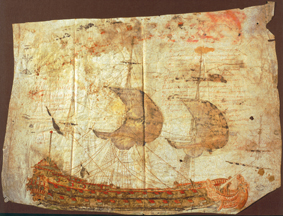 The New Mexico History Museum, El Paso Museum of History, and The Historic New Orleans Collection collaborated on bringing the exhibition of rare documents, paintings and maps from Spain, developing a robust series of public programs, and publishing a bilingual companion catalogue. The exhibition made its U.S. debut at the New Mexico History Museum from Oct. 17, 2010 to Jan. 9, 2011. It then traveled to El Paso through April 24, and is on exhibit in New Orleans through July 10.
The New Mexico History Museum, El Paso Museum of History, and The Historic New Orleans Collection collaborated on bringing the exhibition of rare documents, paintings and maps from Spain, developing a robust series of public programs, and publishing a bilingual companion catalogue. The exhibition made its U.S. debut at the New Mexico History Museum from Oct. 17, 2010 to Jan. 9, 2011. It then traveled to El Paso through April 24, and is on exhibit in New Orleans through July 10.
“This award means so much to all of us on our international team—in New Mexico, Texas, New Orleans, and Spain,” said Dr. Frances Levine, director of the New Mexico History Museum. “I’m especially proud of the History Museum’s exhibition design team and the way our team members and partners at the University of New Mexico’s Spanish and Portuguese and Education departments melded their best efforts with those of our partners’ staffs. Such a collaboration was the only way that an exhibition of this caliber could have been accomplished. We are honored by the recognition.”
Besides the AALSH award, the American Association of Museums gave graphic designer Natalie Baca a second-place award for her invitation to the Threads of Memory opening gala.
Consisting of nearly 140 documents spanning Ponce de León’s first contact in Florida through New Mexico’s incorporation as a U.S. Territory, The Threads of Memory: Spain and the United States (El Hilo de la Memoria: España y los Estados Unidos) drew more than 20,000 visitors to the History Museum during its tenure. Visitors included numerous school groups focused on learning more about U.S. history and the Spanish language.
 The exhibition, presented in Spanish and English, featured such documents as Pedro de Peralta’s orders to establish Santa Fe, a letter signed by Francisco Vázquez de Coronado detailing his travels through the Tiguex province, and documents that detailed the aid given by Spain to the United States during the American Revolution. A small illustration of a buffalo, drawn in 1598 by Vicente Zaldivar, introduced Europeans to an animal whose herds then covered hundreds of miles.
The exhibition, presented in Spanish and English, featured such documents as Pedro de Peralta’s orders to establish Santa Fe, a letter signed by Francisco Vázquez de Coronado detailing his travels through the Tiguex province, and documents that detailed the aid given by Spain to the United States during the American Revolution. A small illustration of a buffalo, drawn in 1598 by Vicente Zaldivar, introduced Europeans to an animal whose herds then covered hundreds of miles.
The U.S. partners also developed a Threads of Memory curriculum and computer interactive for use in classrooms. It remains available as a valuable teaching tool here.
In a letter supporting the museums’ nomination for the award, Dr. Light Cummins, state historian of Texas and Bryan Professor of History, wrote that “The Threads of Memory blends together the best of documentary history, material culture, and the judicious use of artifacts, documents, and images to present one of the most complete and cogent analyses that I have ever seen on the subject.”
Guillermo Corral Van Damme, cultural counselor for the Spanish Embassy in Washington, D.C., said: “This is a wonderful award that rightly recognizes the exceptional work of the three American museums involved in the project. Few times have I seen such an incredible amount of interest and attention to detail put into an exhibition. Working with them, one could feel how our common Spanish-American history is still very much alive today.”
The exhibition was sponsored by the Fundación Rafael del Pino and co-organized by the Archivo General de Indias (General Archive of the Indies) and the State Corporation for Spanish Cultural Action Abroad (Sociedad Estatal para la Acción Cultural Exterior, or SEACEX), in collaboration with Spain’s Ministries for Foreign Affairs and Cooperation and Culture.
“I believe that for all of us who worked on El Hilo, this was a model of collaboration for North American and Spanish cultural institutions,” said Isabel Simo, director of the Archivo General de Indias in Seville, Spain.
The AASLH award will be presented at the group’s annual meeting on Sept. 16 in Richmond, Va.

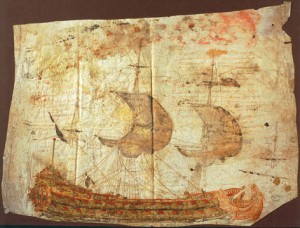
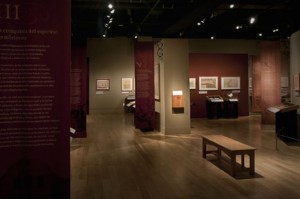 Did you take a spin through The Threads of Memory: Spain and the United States (El Hilo de la Memoria: España y los Estados Unidos)? If so, we could use your help.
Did you take a spin through The Threads of Memory: Spain and the United States (El Hilo de la Memoria: España y los Estados Unidos)? If so, we could use your help.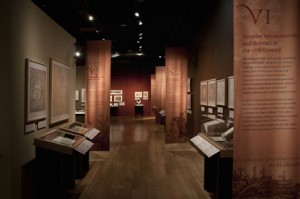 With the able help of UNM professors (Rebecca Sanchez, Mercedes Valenzuela and Ron Taylor) , the History Museum is proud to announce
With the able help of UNM professors (Rebecca Sanchez, Mercedes Valenzuela and Ron Taylor) , the History Museum is proud to announce 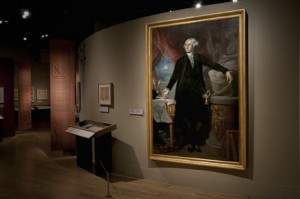 Many of us were taught how important France’s aid was to achieving U.S. independence, but far fewer know that Spain’s financial aid essentially underwrote the American Revolution.
Many of us were taught how important France’s aid was to achieving U.S. independence, but far fewer know that Spain’s financial aid essentially underwrote the American Revolution.
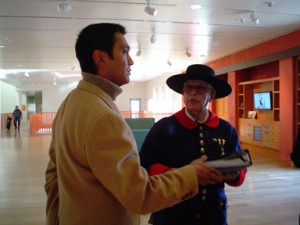
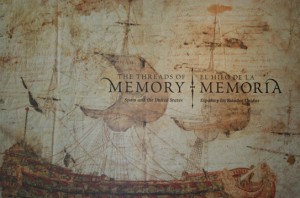 Opening this weekend, The Threads of Memory: Spain and the United States (El Hilo de la Memoria: Espana y los Estados Unidos) weaves the story of Spain’s first 300 years in the Americas. The History Museum marks the U.S. debut of 138 rare and precious documents, maps, illustrations and paintings — but it’s only here until Jan. 9, 2011, so get it on your calendar. (You’ll also enjoy the 12 weeks of lectures, concerts and Chautauqua performances accompanying it; every one of them is free.)
Opening this weekend, The Threads of Memory: Spain and the United States (El Hilo de la Memoria: Espana y los Estados Unidos) weaves the story of Spain’s first 300 years in the Americas. The History Museum marks the U.S. debut of 138 rare and precious documents, maps, illustrations and paintings — but it’s only here until Jan. 9, 2011, so get it on your calendar. (You’ll also enjoy the 12 weeks of lectures, concerts and Chautauqua performances accompanying it; every one of them is free.)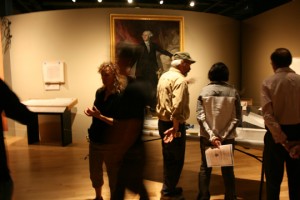 Here, the installation crew buzzes in the part of the gallery where we’ve hung Giuseppe Perovani’s 1796 portrait of George Washington. Many Americans are unaware of the critical role Spain played in helping to win the Revolutionary War. Perovani lived for several years in the United States and, in 1801, with the prestige he had earned, went to Cuba on contract with Archbishop Espejo to help decorate the Cathedral of Havana. He also worked as a teacher there and, afterward, moved back to Mexico, where he became an academic of merit and second director of painting in the Academia de Bellas Artes de San Carlos.
Here, the installation crew buzzes in the part of the gallery where we’ve hung Giuseppe Perovani’s 1796 portrait of George Washington. Many Americans are unaware of the critical role Spain played in helping to win the Revolutionary War. Perovani lived for several years in the United States and, in 1801, with the prestige he had earned, went to Cuba on contract with Archbishop Espejo to help decorate the Cathedral of Havana. He also worked as a teacher there and, afterward, moved back to Mexico, where he became an academic of merit and second director of painting in the Academia de Bellas Artes de San Carlos.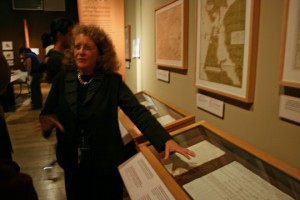 Dr. Frances Levine (left), director of the museum, points to and talks about one of her favorite pieces in the exhibit,a 1786 agreement, hand-written in the Palace of the Governors, between
Dr. Frances Levine (left), director of the museum, points to and talks about one of her favorite pieces in the exhibit,a 1786 agreement, hand-written in the Palace of the Governors, between 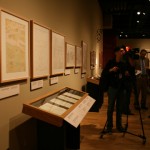 Some of the media members who came to our preview was the
Some of the media members who came to our preview was the  Among EF’s interviews was one with
Among EF’s interviews was one with 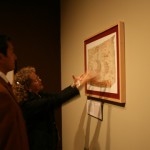 Dr. Levine and Josef Diaz, the museum’s curator of Southwest and Mexican Art and History, examine an illustration of La Belle. The image is the main “brand” of the exhibit; see it above as part of the exhibit title.)
Dr. Levine and Josef Diaz, the museum’s curator of Southwest and Mexican Art and History, examine an illustration of La Belle. The image is the main “brand” of the exhibit; see it above as part of the exhibit title.)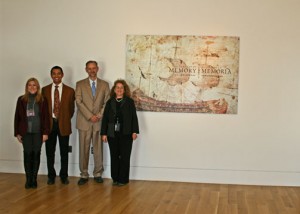 Josef Diaz; Mayor Coss; and Dr. Levine.
Josef Diaz; Mayor Coss; and Dr. Levine.